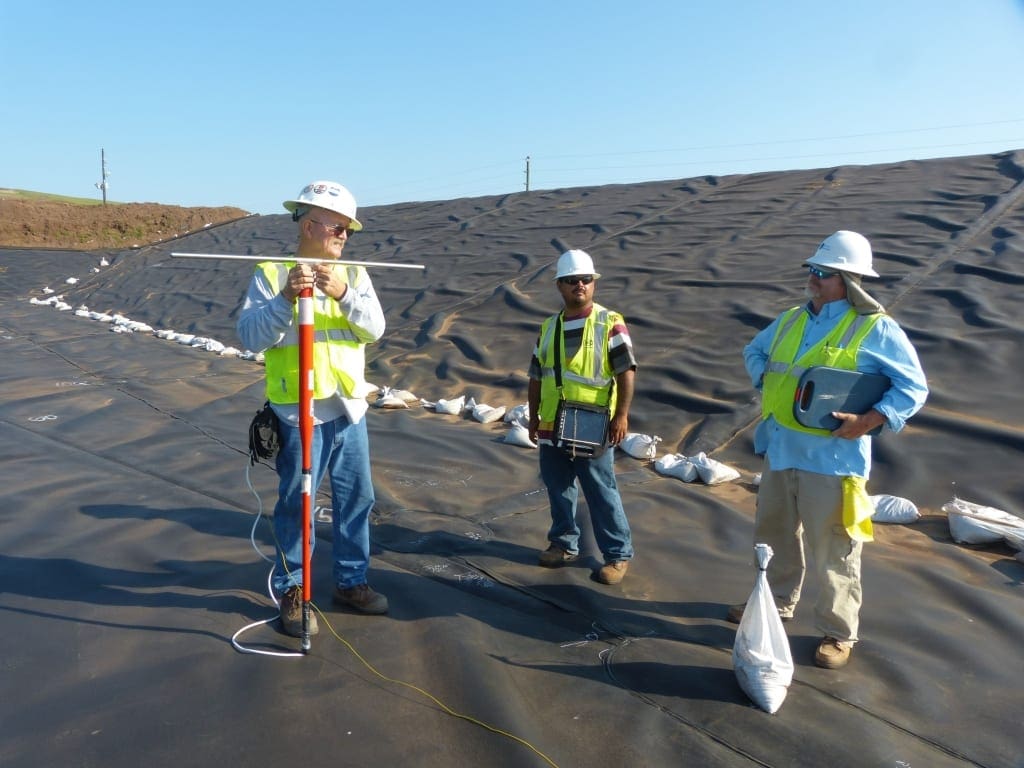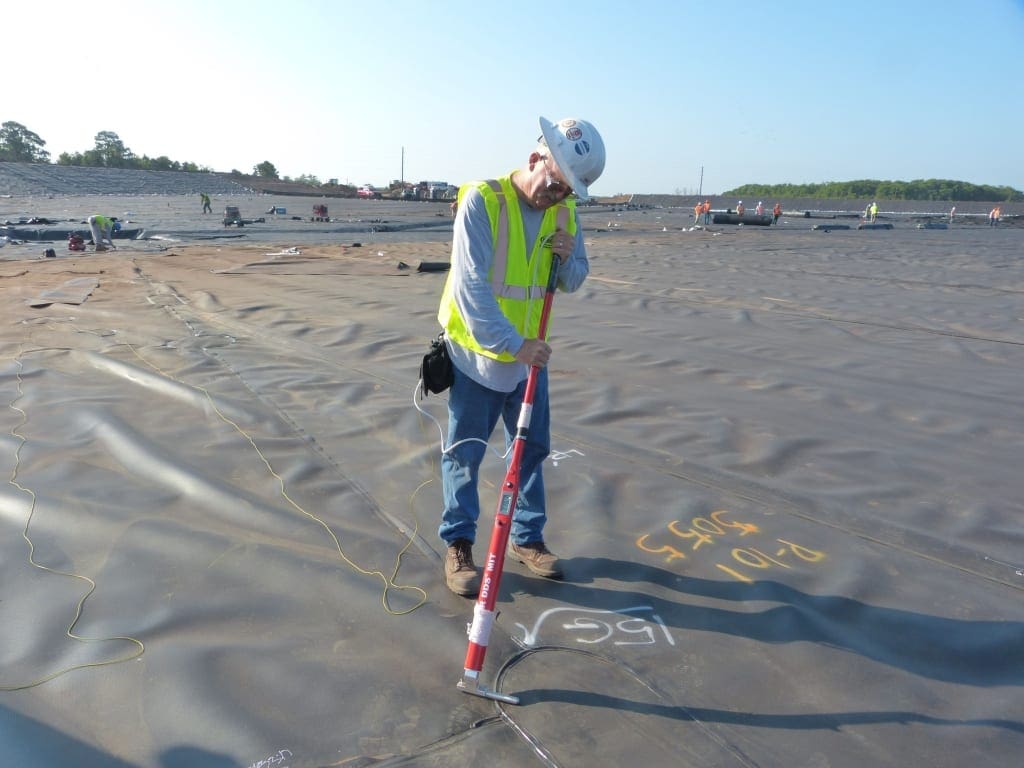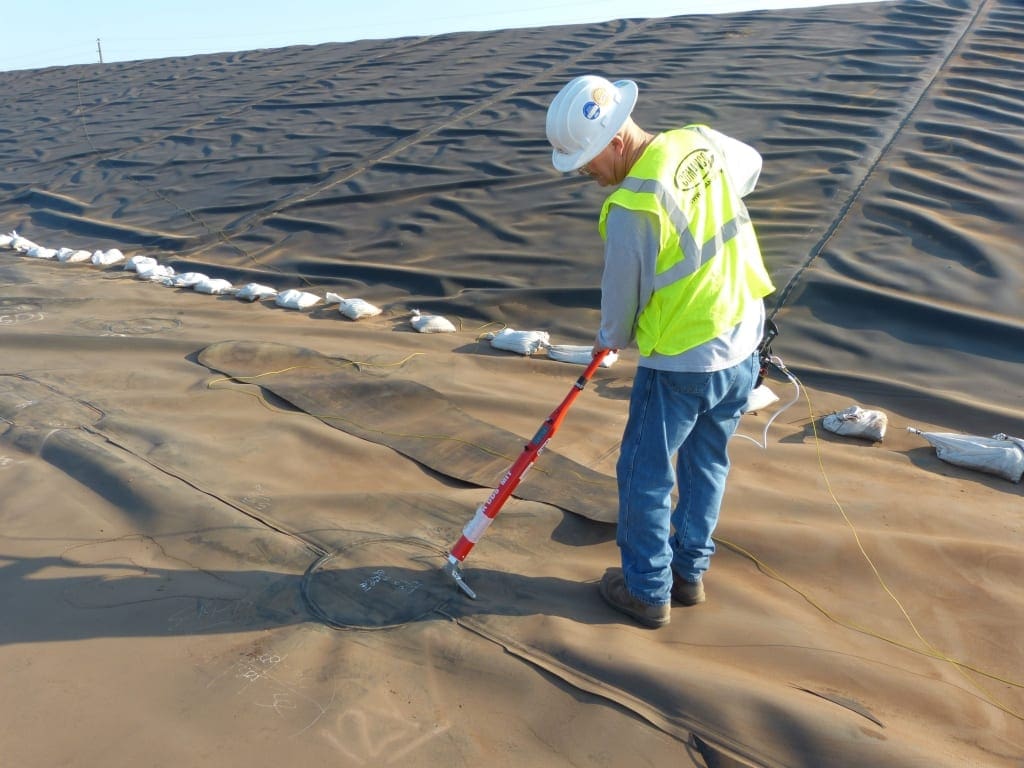COMANCO took its newest tool, the MIT Arc Tester, into the field, at a landfill site in Kissimmee, FL. for the first time yesterday. QC Superintendent BOB Lung, accompanied by Technical Writer Peter Vaka, put the device through its paces to determine its effectiveness in finding previously undetected leaks. The current cell being lined will be 5 layers, when complete. Testing was conducted in an area with two layers; a GCL base layer below and a layer of rough-textured, 60mil liner exposed on top. Vacuum testing had already been completed on all repairs, including joining seam junctures and destructive test patches.
After some experimentation, Lung discovered the short electrode worked best for testing the extruded seams. The grounding T was placed at the top of the embankment and the 200ft ground lead was connected to the battery pack on Lung’s belt. The MIT has two main adjustments; one for the alarm sensitivity and the other for the power level. When the wand is not in contact with the liner, the alarm sounds. Despite a number of false positive alarms, it was discovered the best method is to keep both the power level and the alarm sensitivity high and to rely on the change in sound level of the arc, which was clearly audible.
It was not long before the first leak was discovered. The alarm sounded and there was a clear change in the sound of the electric arc, which was noticeably louder when the probe was placed over the hole, which was at the end of the extruded seam. Apparently, it was not detected as it was located just outside the area covered by the vacuum box.
Lung continued testing 79 additional repairs and did not find any leaks. The presence of the MIT at the site did not go unnoticed. Almost immediately, the third party inspectors gathered around to ask questions. “How does it work?” They were impressed, having never seen the technology before.
“I still need to do more field testing before making any operational recommendations,” said Lung. Perhaps the biggest advantage to this new technology, in addition to accuracy, is speed. It took less than two hours to complete testing of the 80 repairs. Unlike vacuum box testing, only one person is needed and there is no heavy generator to wheel around or a bucket of soapy water.
What is not yet clear is how readily this method of testing will be accepted and if it will replace vacuum box testing, as now specified for many jobs. When that happens, the MIT Arc Tester will more than pay for itself.
COMANCO expects that this method of testing will be in wide use by the end of the year.





